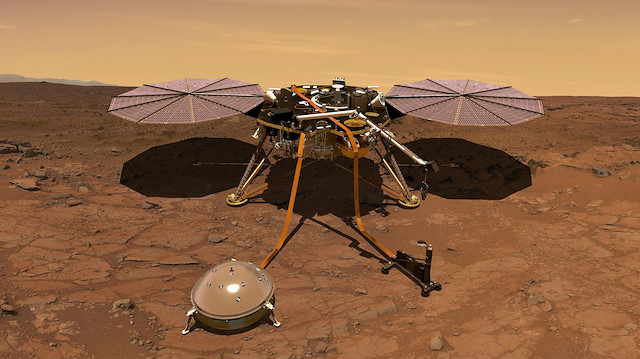
InSight is the first dedicated to unlocking secrets from deep below the Martian surface. The lander will spend 24 months - about one Martian year - using seismic monitoring and underground drilling to gather clues on how Mars formed and, by extension, the origins of Earth and other rocky planets of the inner solar system more than 4 billion years ago.
"What this helps us understand is how we got to here," said JPL's Bruce Banerdt, InSight principal investigator, during a pre-landing briefing with reporters last week.
While Earth's tectonics and other forces have erased most evidence of its early history, much of Mars - about one-third the size of Earth - is believed to have remained largely static over the eons, creating a geologic time machine for scientists.
InSight's primary instrument is a highly sensitive French-built seismometer, designed to detect the slightest vibrations from "marsquakes" and meteor impacts.
Scientists expect to see a dozen to 100 marsquakes over the course of the mission, producing data to help them deduce the size, density and composition of the planet.
The Viking probes of the mid-1970s were equipped with seismometers, but they were bolted atop the landers, a design that proved largely ineffective.
InSight also is fitted with a German-made drill to burrow as much as 16 feet (5 meters) underground, pulling behind it a rope-like thermal probe to measure heat.
Meanwhile, a radio transmitter will send signals back to Earth, tracking Mars' subtle rotational wobble to reveal the size of the planet's core and possibly whether it remains molten.
The InSight and next rover mission, along with others in the planning stage, are seen as precursors for eventual human exploration of Mars, NASA officials said.



